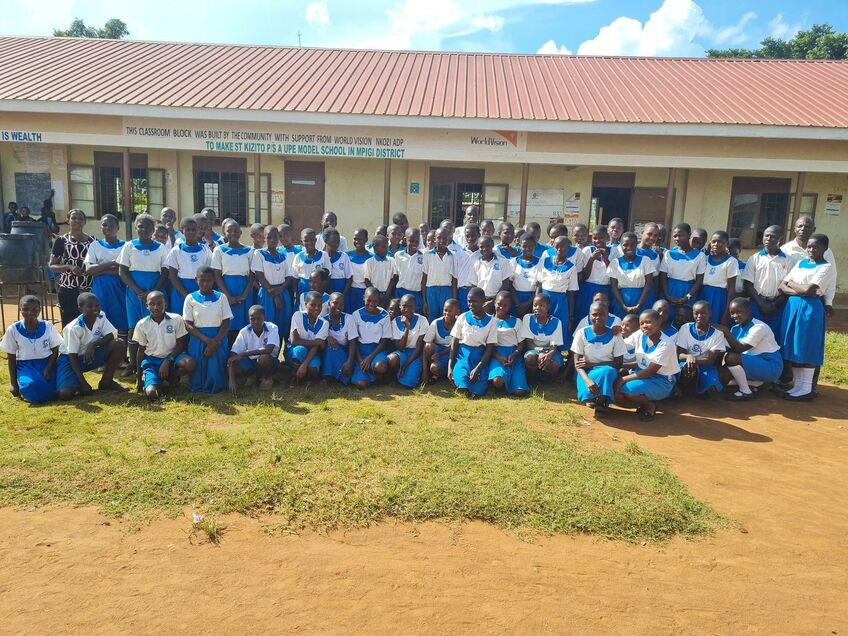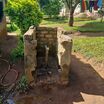Project
St. Kizito Kayabwe Primary School
Project Complete!
St. Kizito Kayabwe Primary School hosts roughly 700 primary school students, taught by 17 teachers throughout 10 classrooms. This day school is government-aided, relying on governmental funds for support. Although piped water is on school grounds, it is highly unreliable, and students, mainly girls, must fetch water twice a day. The facility spends 130,000 Ush monthly (roughly $35 USD) on water alone. Additionally, students and staff must boil the water before it can be used to wash dishes, prepare food, and/or drink. To eliminate health concerns among students, we are hoping to install a new rainwater collection system and provide water filters and handwashing stations.
PROJECT PROPOSAL:
Our implementing partner, the Ugandan Water Project, will erect a 10,000-liter polyethylene tank on a base made of brick, hardcore, and cement. Once cured, the crew will place the tank on the base, create an overflow hole at the top of the structure, and attach a pipe to it that will extend six inches beyond the perimeter of the base. Crew members will also attach face boards to the roof of the building adjacent to the tank to create a suitable surface to which they can attach the gutters that will allow water to flow from the metal roof to the tank. Just before the outlet pipe reaches the tank, a “T” joint will be inserted to create a first flush, a rudimentary filtration system that reduces the amount of debris and contaminants that enter the tank. The crew will then construct a protective wall around the tank and first flush and a tap stand located slightly downhill from the tank. The rainwater collection system will be paired with four Sawyer Point One water filters to ensure that all water collected from the tank will be safe for drinking.
Our implementing partner, the Ugandan Water Project, will erect a 10,000-liter polyethylene tank on a base made of brick, hardcore, and cement. Once cured, the crew will place the tank on the base, create an overflow hole at the top of the structure, and attach a pipe to it that will extend six inches beyond the perimeter of the base. Crew members will also attach face boards to the roof of the building adjacent to the tank to create a suitable surface to which they can attach the gutters that will allow water to flow from the metal roof to the tank. Just before the outlet pipe reaches the tank, a “T” joint will be inserted to create a first flush, a rudimentary filtration system that reduces the amount of debris and contaminants that enter the tank. The crew will then construct a protective wall around the tank and first flush and a tap stand located slightly downhill from the tank. The rainwater collection system will be paired with four Sawyer Point One water filters to ensure that all water collected from the tank will be safe for drinking.
H2O for Life is not a WASH (water, sanitation and hygiene) project implementer. We have partnerships with non-governmental organizations (NGOs) implementing WASH in Schools projects around the world. Our NGO partners match funds needed for each school project. We also have a generous donor that provides us with an interest-free loan that, along with matching funds, allows for many projects to be started or possibly even completed before total funds have been raised. In rare situations we reserve the right to reallocate funds to alternate project(s).
Questions? Ask us at 651-756-7577 or info@h2oforlifeschools.org.
No Updates



